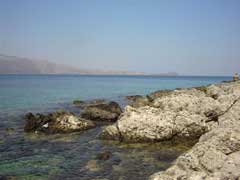 Securing Water For Food: A Grand Challenge For Development
Securing Water For Food: A Grand Challenge For Development
Online Streaming from World Water Week
Securing Water for Food will be launched during the opening plenary session of World Water Week in Stockholm, Sweden on September 2, 2013, from 12:15-12:30pm (Stockholm Time). A web telecast will be available for viewing here.
In addition, Securing Water for Food Founding Partners will be hosting a side event on September 3, 2013, from 10:30am until 1pm (Stockholm Time) to solicit feedback on program design. A web telecast with an interactive chat component will be available here.
Finally, you can follow us on Twitter at @SecuringWater and join in the conversation on program design by using the hashtag #securingwaterchat.
When will I find out more?
The Founding Partners anticipate issuing multiple “calls for innovations” for Securing Water for Food. The first “call” will be released in draft form for comment in conjunction with the launch at World Water Week in Stockholm in September 2013.
What is the Securing Water for Food challenge?
On September 2, 2013 in Stockholm, the United States Agency for International Development (USAID) and the Swedish International Development Cooperation Agency (Sida), (collectively, the “Founding Partners”) will launch Securing Water For Food: A Grand Challenge for Development (GCD).This is the third GCD that Sida is supporting in partnership with USAID. It is a demonstration of our continued commitment to stimulate science, technology, innovation, and entrepreneurship.Through this GCD, we will identify and accelerate science and technology innovations and market-driven approaches that improve water sustainability to boost food security and alleviate poverty. We are focusing on three areas that are critical to reducing water scarcity in the food value chain:
- Improving Water Efficiency and Reusing Wastewater have the potential to significantly extend the productivity of limited water resources particularly in the food value chain where water-saving benefits can have multiplier effects at various levels of the economy.
- Effective Water Capture and Storage systems are critical for extending temporal availability of water supply in regions where precipitation is seasonal. With projected increases in rainfall variability due to climate change and increased demands for food production, capture and storage systems at various scales are needed to secure water supplies throughout the year and build resiliency to drought.
- Salinity of water supply is a major threat to food production. In coastal areas, over-pumping and rising sea-levels are leading to saltwater intrusion and farmers are forced to use marginal quality water for irrigation. With more than 30 percent of the world’s population living in coastal areas and drawing food supply from fertile deltas, urgent solutions are required to reduce the impacts of salinity on aquifer quality and food production.
Why are we trying to secure water for food?
Water scarcity is one of the most pressing development challenges of the early 21st Century.Approximately 2.8 billion people—more than 40 percent of the world’s population—live in river basins impacted by water scarcity. Nearly half live in areas of physical scarcity, where demand is greater than the available supply; the remaining 1.6 billion face economic water scarcity, where institutional, financial and human factors limit access to water despite an available natural supply. Both physical and economic water scarcity can lead to negative outcomes related to health, agricultural productivity, environmental degradation and growth of the commercial and industrial sectors.
Between 2000 and 2050 water demand is projected to increase by 55 percent globally, meaning that the number of people impacted by water scarcity and stress will continue to rise. Most importantly, more than 70 percent of global water use occurs in the food value chain.
Technological and business model innovations could substantially reduce water scarcity. Many of these innovations already exist, but are not reaching developing and emerging countries due in part to:
- Lack of cost-appropriate technologies for use in low-resource settings;
- Insufficient user-centered design in technology development;
- Poorly developed supply chains;
- Lack of distribution networks;
- High upfront investment costs;
- Lack of confidence that developing countries have the market mechanisms necessary for growth;
- Absence of proper financing tools;
- Limited access to information that would enable entrepreneurs to make informed investment, management, and marketing decisions; and
- Lack of information and training on how to use the technologies.
Who are we engaging?
We want to find and support the best science and technology innovators, entrepreneurs, businesses, students, and other organizations that can help solve this GCD. Innovators can come from anywhere in the world. Implementation must take place in a developing or emerging country.
What will the first round of the program look like?
The Founding Partners will select up to 30-40 winners in the first round of competition, based on a rigorous evaluation process. Winners will receive funding and acceleration support. Our strategy forSecuring Water for Food includes the following core elements:
- All innovations must be sustainable. Our goal is to use our resources, not as a subsidy, but rather as a resource to catalyze investments by others. All Securing Water for Food innovations must be sustainable (financially, institutionally, environmentally, technologically, and socially). In addition, innovations must directly or indirectly benefit the poor (i.e. increased income, increased adoption of products or services, increased economic opportunities) and must avoid negative environmental effects and negative local market distortions.
- We want to facilitate market-driven partnerships: Securing Water for Food will facilitate partnerships between entrepreneurs, investors and funds, corporations, governments, NGOs, and others. This includes building business-to-business and business-to-customer relationships, as well as buyer/supplier and distribution connections.
- We want to leverage market-based financing: Funding provided by the Founding Partners underSecuring Water for Food will be milestone-based. Additionally, all winners will be required to have market-based matching funds.
- Local presence is critical. Successful applicants must either already have presence in a developing country, or identify a local partner with whom they will work.
- We want to stimulate innovative financing to scale water technologies and businesses. We anticipate using investment bridges, credit guarantees, advanced market commitments, and other innovative mechanisms to support the commercialization of water generation, storage, salinity reduction, and more efficient end-use technologies in the food sector.
- We believe that scale doesn’t happen through financial support alone: Securing Water for Foodis our fifth GCD. In no previous GCD have we found financial support to innovators to be enough. We have, therefore, built a robust, hands-on acceleration “track” into the design of Securing Water for Food. This will include a mix of hands-on acceleration work planning, one-on-one mentoring/coaching, facilitation of debt and equity financing, and facilitated participation in Investors’ Circles, marketplace presentations, trade shows, and technology fairs. Additionally, we anticipate providing financial support to business acceleration entities or brokers that will deliver technical assistance to water innovators.
What will we fund in the first round of the program?
We are looking to source, fund, and accelerate the development of scientific, technological, and business innovations that will enable us to secure water for food. We will fund innovators that exist in two “stages” of the innovation lifecycle:
- Stage 1, Validation: This targets innovations that have been verified in at least one market and now need to be tested and adapted to a different developing or emerging market and/or that need input from the industry or potential clients to confirm acceptance and technical viability.
- Stage 2, Commercial Growth/Scaling: These innovations need support for commercial growth. This may include efforts to adapt the innovations for larger scale production, market adoption, and distribution.
| Contact information | n/a |
|---|---|
| News type | Inbrief |
| File link |
http://www.securingwaterforfood.org/ |
| Source of information | http://www.securingwaterforfood.org/ |
| Keyword(s) | water for food |
| Subject(s) | AGRICULTURE , FINANCE-ECONOMY , HYDRAULICS - HYDROLOGY , NATURAL MEDIUM , POLICY-WATER POLICY AND WATER MANAGEMENT , RISKS AND CLIMATOLOGY , WATER DEMAND |
| Geographical coverage | Sweden, |
| News date | 03/09/2013 |
| Working language(s) | ENGLISH |
 you are not logged in
you are not logged in





